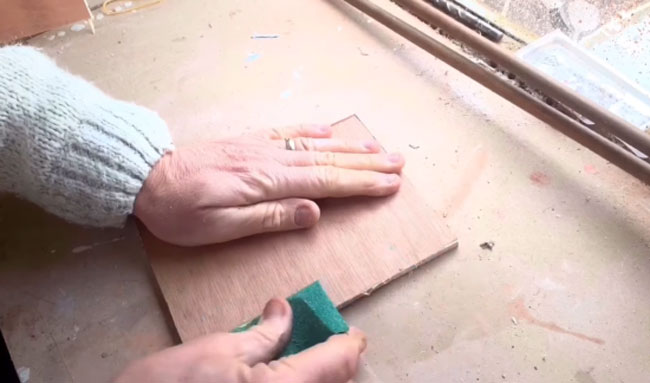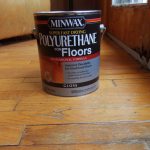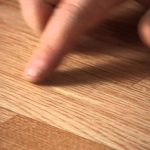How to Glue Plexiglass to Wood? Concrete Bond in 5 Easy Steps
When it comes to creating exciting wood-plexiglass projects, you can follow various methods to attach the two materials. Among all the different ways, gluing wood to plexiglass is probably the easiest and safest option.
So, how to glue plexiglass to wood? First, choose the right adhesive (epoxy or CA glue) suitable for both plexiglass and wood. Clean and smoothen both surfaces with sandpaper and mark the area of application. Carefully apply the glue with a syringe or glue gun, place the plexiglass on the wood, and wait until the glue dries.
To guide you through the process, we’ll discuss the right method of gluing plexiglass to wood. Let’s dive in!
Gluing Plexiglass to Wood: Which Adhesive to Choose?

Thankfully, the process of gluing wood and plexiglass is easy, but you must use the right type of glue or adhesive. The glue you choose should easily attach to both plexiglass and wood. Here’s an overview of suitable adhesives and their properties:
| Type of Glue | Advantages | Disadvantages | Finish |
|---|---|---|---|
| Epoxy glue | Strong bond, versatile, suitable for both indoor and outdoor projects | Might release toxic epoxy fumes | High-gloss clear finish |
| Super Glue or Cyanoacrylate (CA) Glue | Dries fast, holds strong, and leaves little to no mess | Not great for dry wood | Clear and brittle finish |
| Acrylic Polymer Glue | Flexible, easy to apply, resistant to moisture and UV exposure | Not ideal for high-temperature applications | Transparent finish |
| Hot Glue | Fast-drying, easy to remove, doesn’t release toxic fume | Sensitive to temperature changes | Clear or milky white |
How to Glue Plexiglass to Wood? Step-by-Step
Now that you know which glue to use for your project, it’s time to learn the process. Depending on the level of customization, the process might require special tools like a miter saw. To glue plexiglass and wood, follow the steps given below:

Step 1: Choose Your Workplace and Collect the Necessary Materials
Before you start, make sure to choose the right workplace and gather all the necessary items to complete the process. Work in a well-ventilated area so that toxic fumes can pass through.
Also, you should perform the task on a concrete or metal surface. Otherwise, the glue might get attached to the workplace surface, which will be difficult to remove. To complete the gluing process, you’ll need-
- Gloves and protective mask
- Sandpaper
- Marking pen
- Masking tape
- Syringe or glue gun
- Brush
- Cloth
- Soapy water (optional)
- Knife
- Sealant (optional)
- Miter saw (optional)
Step 2: Clean the Plexiglass and Sand Wood Surface
Start by wearing hand gloves and a protective mask for protection against spills and fumes. Also, cover your working area with masking tape so that the excess glue doesn’t damage the surface.
For the glue to work properly, it’s essential to keep the surface clean. If there’s any dirt or oil on the plexiglass, you need to wipe it with soapy water. As for the wooden surface, use soapy water to clean the surface and sandpaper to smoothen it.

In this case, you’ll need 80-grit sandpaper to make the wood stick better to the glue. Make sure both surfaces are completely dry before proceeding. However, if you’re using superglue, keep the wooden surface damp for better adhesion.
Step 3: Prepare Plexiglass and Test Fit
Now, if the plexiglass piece isn’t shaped yet, you can cut it with a knife or miter saw. For a quarter-inch or thicker plexiglass piece, you need a miter saw. If the piece is thinner, a sharp knife will do. After cutting, sand the sharp edges of the plexiglass to smoothen it.
Position the Plexiglass on the wood to make sure it fits properly. Use a marker pen to mark the area on the wood for easier application of the glue.
Step 4: Apply the Glue
Check out the instruction label on the glue container for the proper application process. In general, one drop of glue is sufficient for every square inch of plexiglass or wood. If you’re worried about the compatibility of the glue, test it on a small area first.
The right glue will firmly attach wood to plexiglass without damaging the materials. In any case, avoid using glues that contain harmful chemicals such as ammonia, benzene, or ethanol.
Also, try to choose the spray form of the glue. Altogether, here’s what you need to do depending on the glue type:
- For epoxy glue, mix the two parts (resin and hardening agent) in equal amounts. Use a 25-gauge syringe to apply the glue on the wood or plexiglass as needed.
- To apply hot glue, use a glue gun instead. Hot glue typically comes in sticks, and the heat melts the glue. As hot glue hardens in seconds, you must act fast after applying the glue. Avoid using this type of fast-drying glue if the surface area is too large.
- As for super glue and acrylic polymer glue, use the glue applicator provided with the package. Otherwise, use an old brush to spread the glue on the surface in a thin and even layer.
Step 5: Dry and Cure
When you’ve attached the plexiglass and wood surfaces together, it’s time to let the glue do its job. It typically takes a few minutes to hours for the glue to harden and set.
Depending on the type of glue, leave the attached pieces to cure for 24 to 48 hours. You can remove the excess glue with a blunt knife or use sandpaper. Don’t apply any pressure or move the glued pieces.
Otherwise, the glue might weaken, and the two surfaces will come loose. After curing, you can apply a sealant for the specific glue you’ve used to protect it from environmental damage.
FAQs
Want to know more about gluing plexiglass and wood? In this section, we’ll answer some common queries to provide you with a deeper insight.
Q. How do you remove dried glue from plexiglass?
To remove dried glue from plexiglass, soak a clean cloth in white vinegar or turpentine. Rub the cloth on the dried glue until it comes off. You can also use commercial glue removers such as Goof-Off. Finally, use a scraper if you don’t mind scratching the plexiglass surface.
Q. Does silicone glue enough for plexiglass?
No, silicone glue isn’t a strong enough adhesive to glue plexiglass. Plexiglass is basically a clear acrylic sheet which is a thermoplastic. So, you should choose a different glue that works well on acrylic sheets or plastic.
Q. Can you use PVC glue on plexiglass?
No, you can’t use PVC glue on plexiglass. PVC glue is designed to bond PVC pipe and fittings, so it won’t work on plexiglass. If you need to bond plexiglass to PVC, you should use a two-part epoxy glue instead.
Final Words
By following our detailed guide on how to glue plexiglass to wood, you can glue the two materials within minutes. Just make sure you choose the right glue that suits your needs and strongly bonds plexiglass to wood.
Avoid using any harsh chemicals while cleaning and gluing as they can damage the plexiglass surface. Besides, you can’t apply heat or pressure on the glued surface as it will break the bond. Check the label on the glue for special instructions provided by the manufacturer.




